Atmospheric Oxidation Nexus — From Emissions to Impacts ✨
I trace how the atmosphere’s cleaning power connects human activities, extreme‑weather triggers, and Earth‑system feedbacks. Specifically, I study how anthropogenic actions and a warming climate reshape the atmospheric oxidising capacity (OH/HO2, O3)—and how those shifts feed back to climate, weather events (e.g., sea fog), ecosystems, and human health. My research spans the full chain from Emission → Chemical Transformation → Weather / Climate Coupling to Feedbacks on Climate, Weather & Life.
I. Anthropogenic Emission Fingerprints 🌇⛽️
Q1: What is the VOC fingerprint of China’s oil and gas extraction?
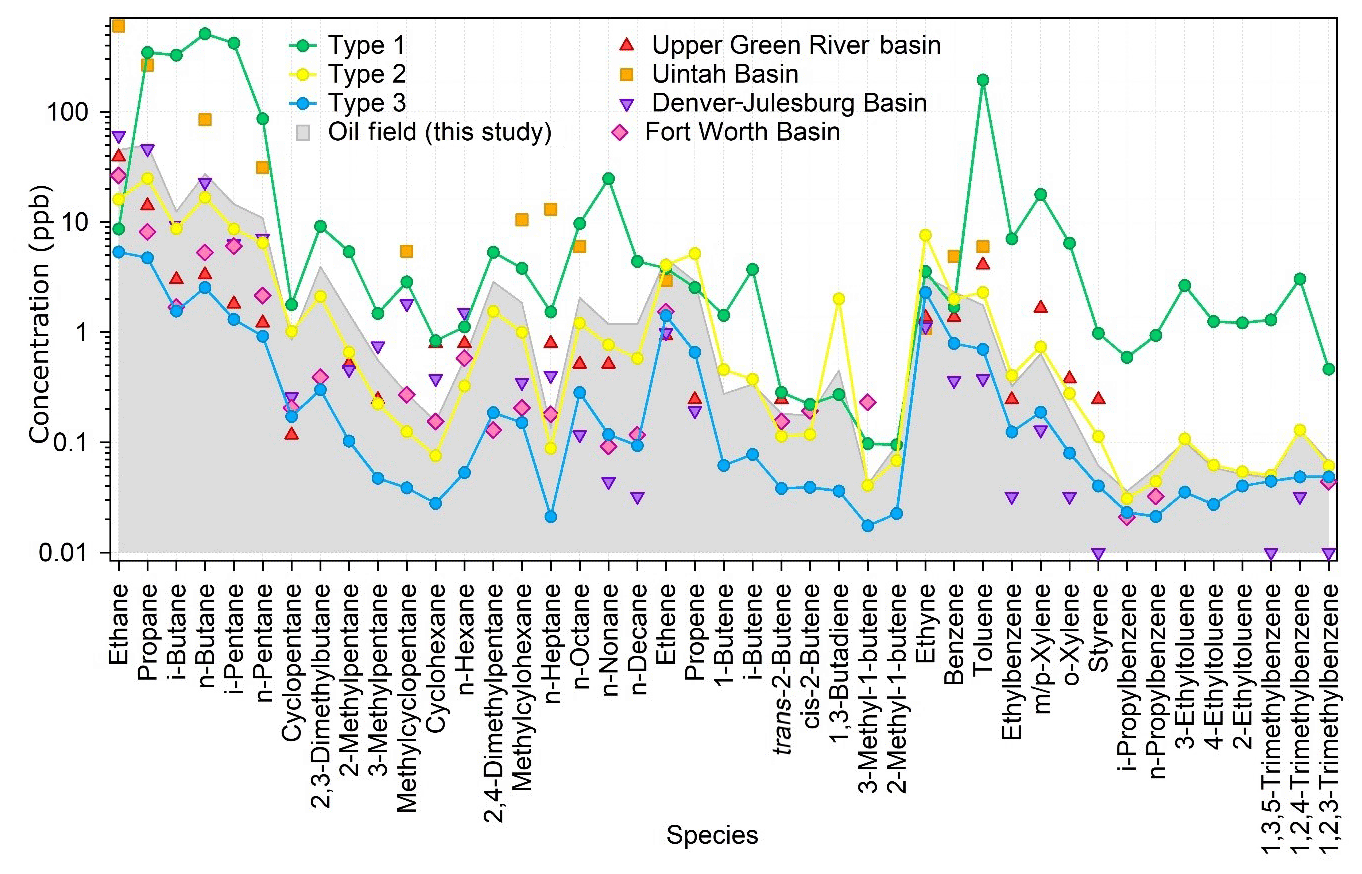
Oil and gas extraction is a significant source of atmospheric VOCs, which are key precursors in tropospheric chemistry and ozone formation.
-
First direct VOC emission measurements were conducted at oil fields in China, filling a critical data gap.
-
The study compared VOC compositions from Chinese oil fields (gray area) with:
- Three types of ambient samples from the same region
- VOC profiles from four U.S. oil fields (ERG, Field et al., Gilman et al., Koss et al.)
II. Chemical Mechanisms Shaping Atmospheric Oxidising Capacity 🧊💥
Q1: How do everyday products affect the air we breathe?
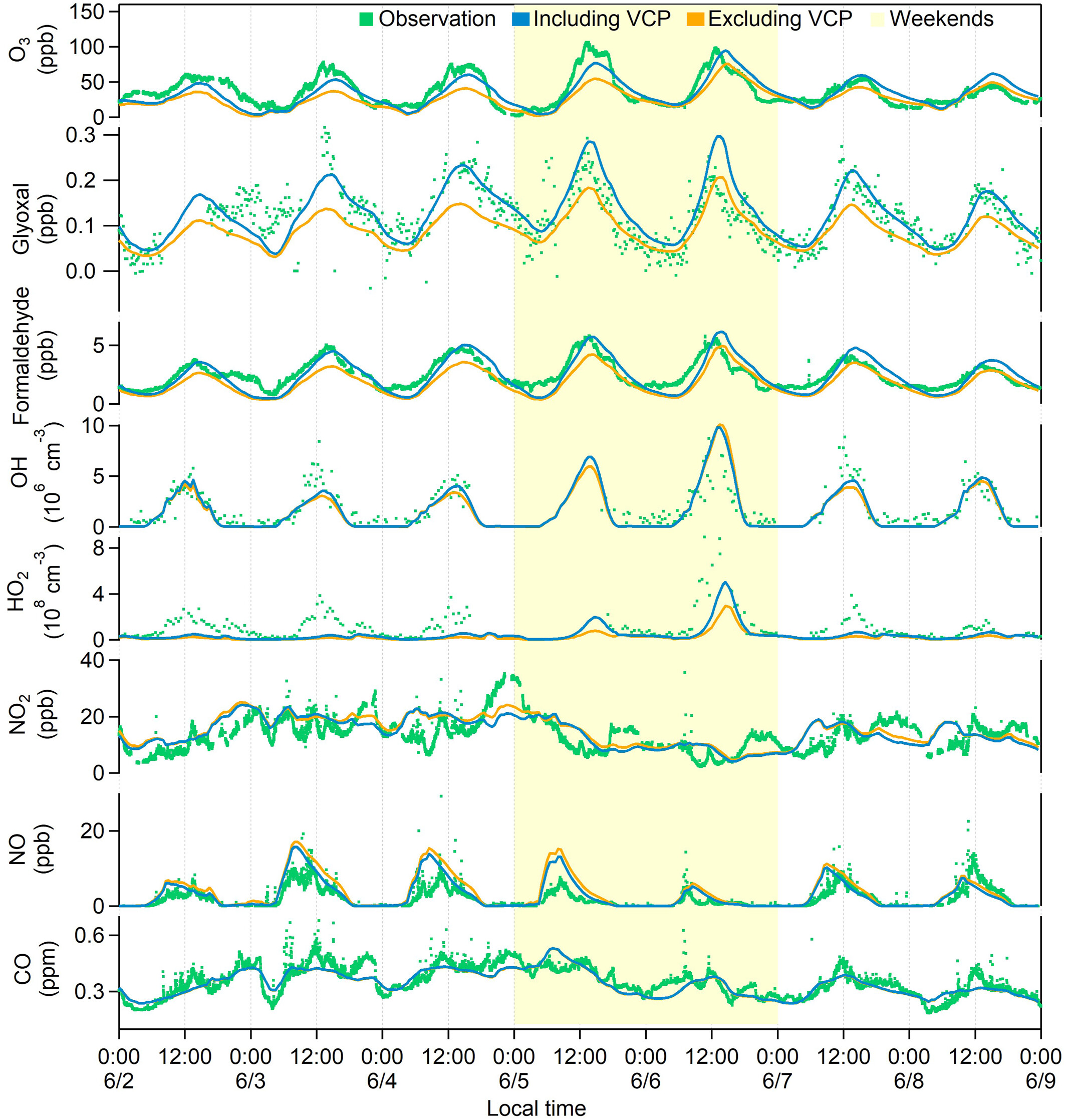
Volatile Chemical Products (VCPs) like solvents, personal care items, and coatings have become dominant VOC sources in urban areas such as Los Angeles.
-
VCP emissions contributed ~23% of peak ozone during pollution episodes (CalNex 2010), as shown by detailed MCM modeling.
-
These VOCs enhance ozone formation by increasing primary production and recycling of radicals (ROx).
-
Mechanisms with VCP chemistry (e.g. RACM2-VCP) more accurately reproduced ozone levels compared to simplified schemes.
-
NOx reductions in 2020 (e.g. from COVID) led to a NOx-limited regime, reducing VCP impact on ozone.
Q2: How does oil and gas extraction shape regional air chemistry?
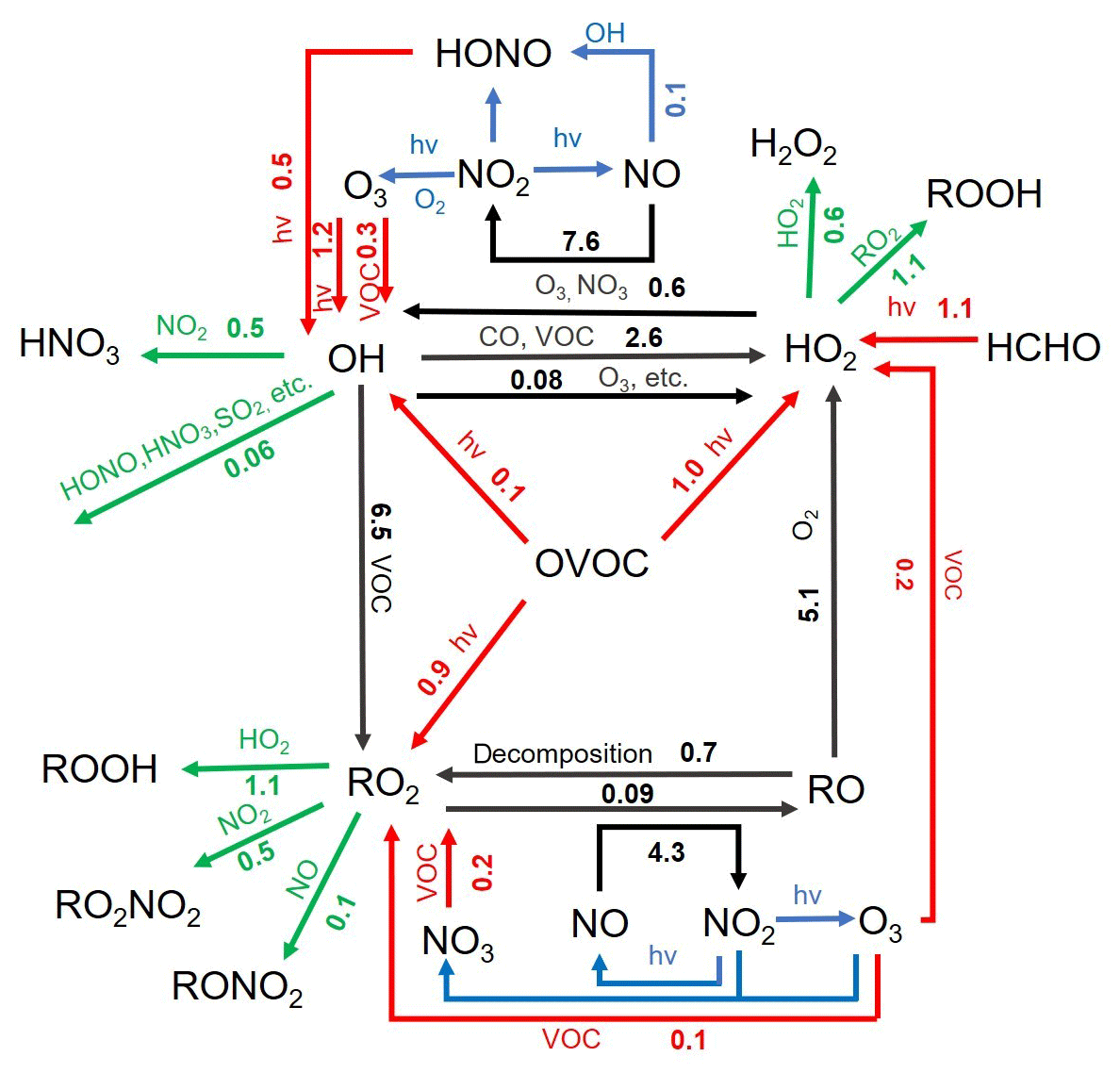
A observation-constrained chemical box model was used to evaluate the radical and ozone budgets under real atmospheric conditions in China's oilfield region.
- Oxygenated VOCs (OVOCs) were major contributors to primary ROx production, OH loss, and radical recycling.
- Photolysis of OVOCs, O₃, and HONO, along with ozonolysis of unsaturated VOCs, dominated the initiation of radical chemistry.
- High ozone episodes were observed frequently in summer, driven by abundant VOCs and intense photochemistry.
- NOₓ was the limiting factor for both radical recycling and ozone formation, highlighting a NOₓ-limited regime.
These findings underscore the strong impact of oil and gas extraction on atmospheric oxidation capacity and regional air quality.
Q3: How do ships influence atmospheric “clean power” over the ocean?
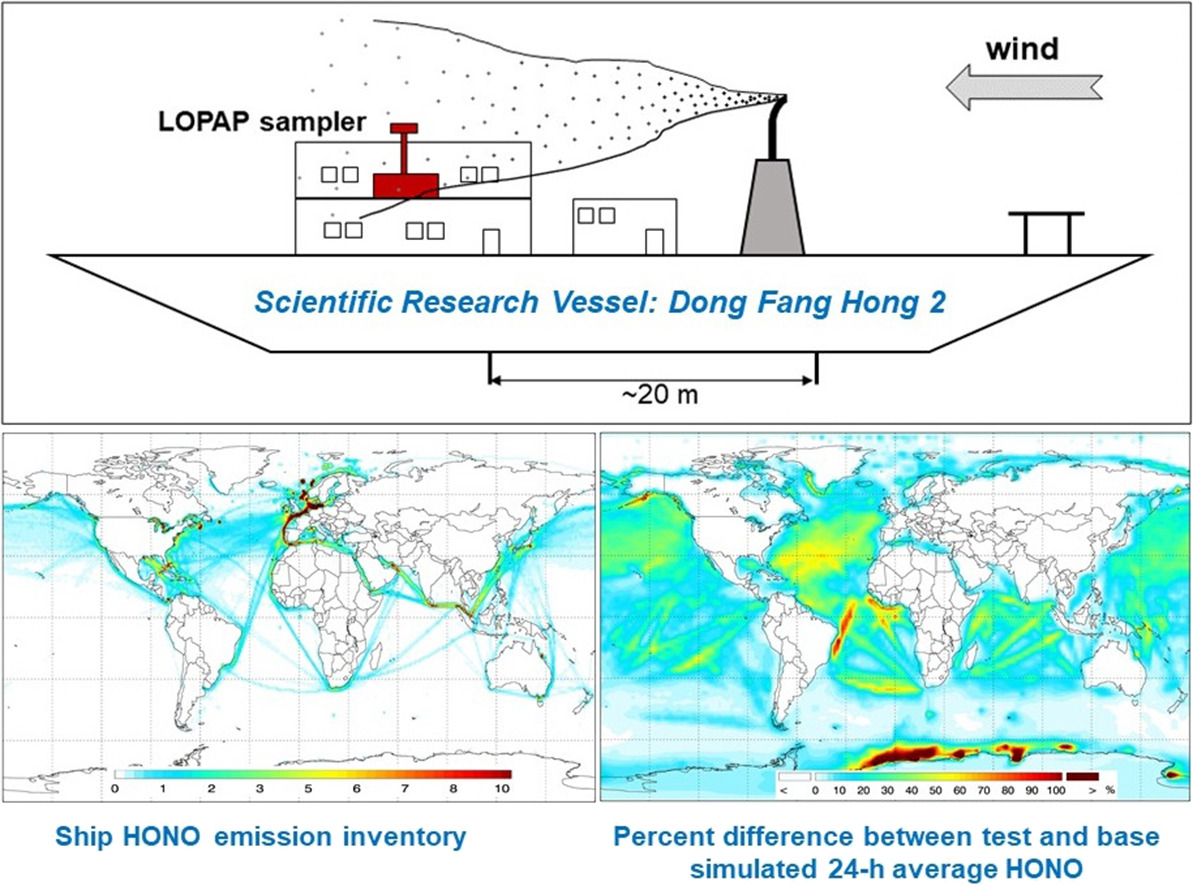
HONO (nitrous acid) is a key precursor of hydroxyl radicals (OH), which initiate many oxidation processes in the atmosphere. While land-based traffic emissions of HONO are well studied, little is known about ship-derived HONO and its impact on marine atmospheric chemistry. This study fills that gap through cruise measurements and global modelling.
- Direct ship-plume observations over the East China Sea revealed a HONO/NOₓ emission ratio of 0.51 ± 0.18%.
- Using this measured ratio, the team estimated that global shipping emits ~63.9 ± 22.2 Gg HONO per year.
- GEOS-Chem simulations incorporating these emissions showed that HONO levels could increase by 40–100% over shipping lanes.
- This elevated HONO led to 5–15% higher early-morning OH production, significantly enhancing marine oxidising capacity.
- The findings suggest that ship-emitted HONO is a non-negligible source of atmospheric oxidants over the oceans and should be included in chemical transport models.
III. Weather–Climate Modulation of Atmospheric Oxidation 🌕💨
Q1: What happens to air pollution during a record-breaking heatwave?
The summer of 2022 brought record-breaking heatwaves to eastern China, severely affecting air quality. This study reveals a multi-faceted feedback loop where extreme heat, soaring electricity demand, and energy policy constraints jointly worsened ozone pollution across densely populated regions.
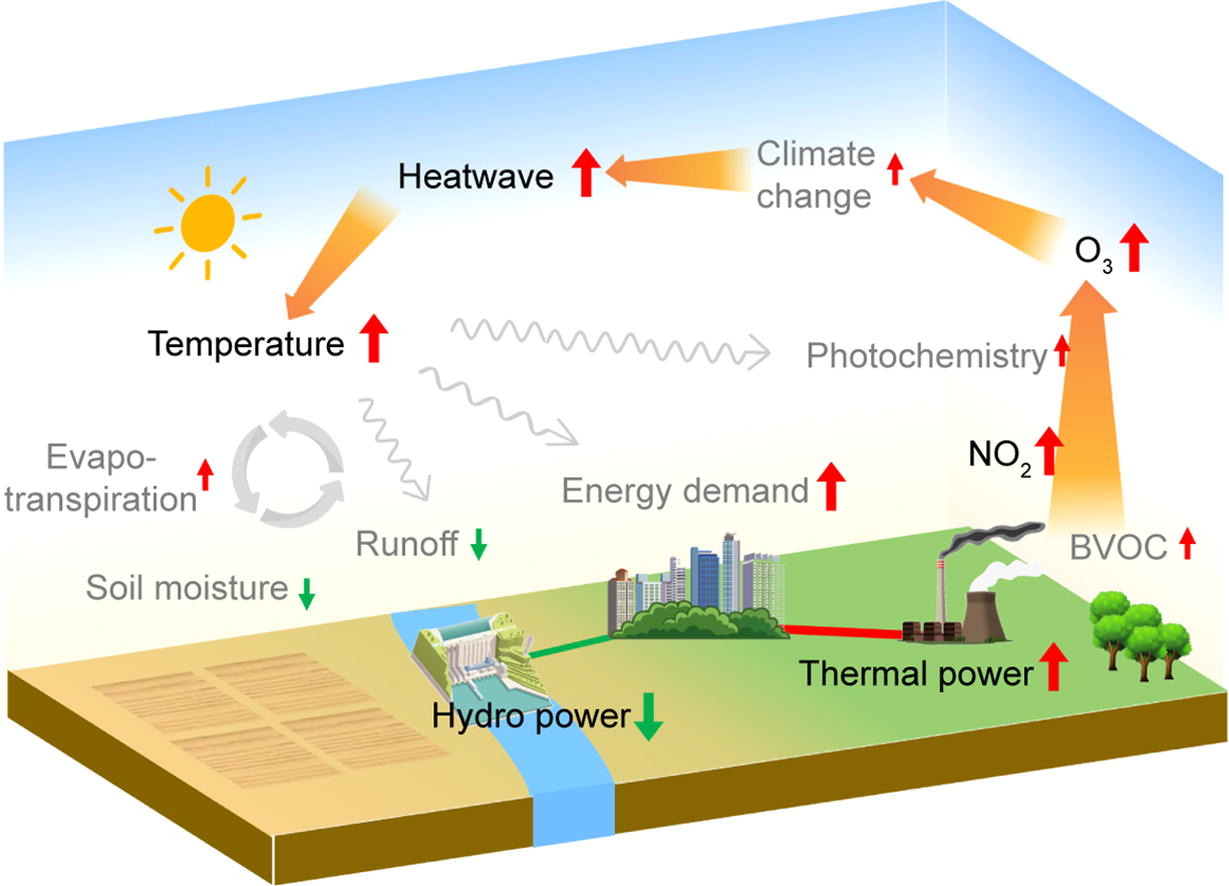
- Energy–climate feedback: Heatwaves raised cooling demands while hydropower shortages limited clean energy supply.
- Increased emissions: Fossil-based power generation surged, elevating NOx and VOC emissions.
- O3 enhancement: Elevated temperatures and stagnant air favored ozone formation.
- Policy implication: Calls for cleaner and more resilient energy structures under warming climate.
IV. Oxidant‑Driven Feedbacks on Climate, Weather & Life 🌁🌲
Note: Each study may span multiple themes; see the publications page for details.